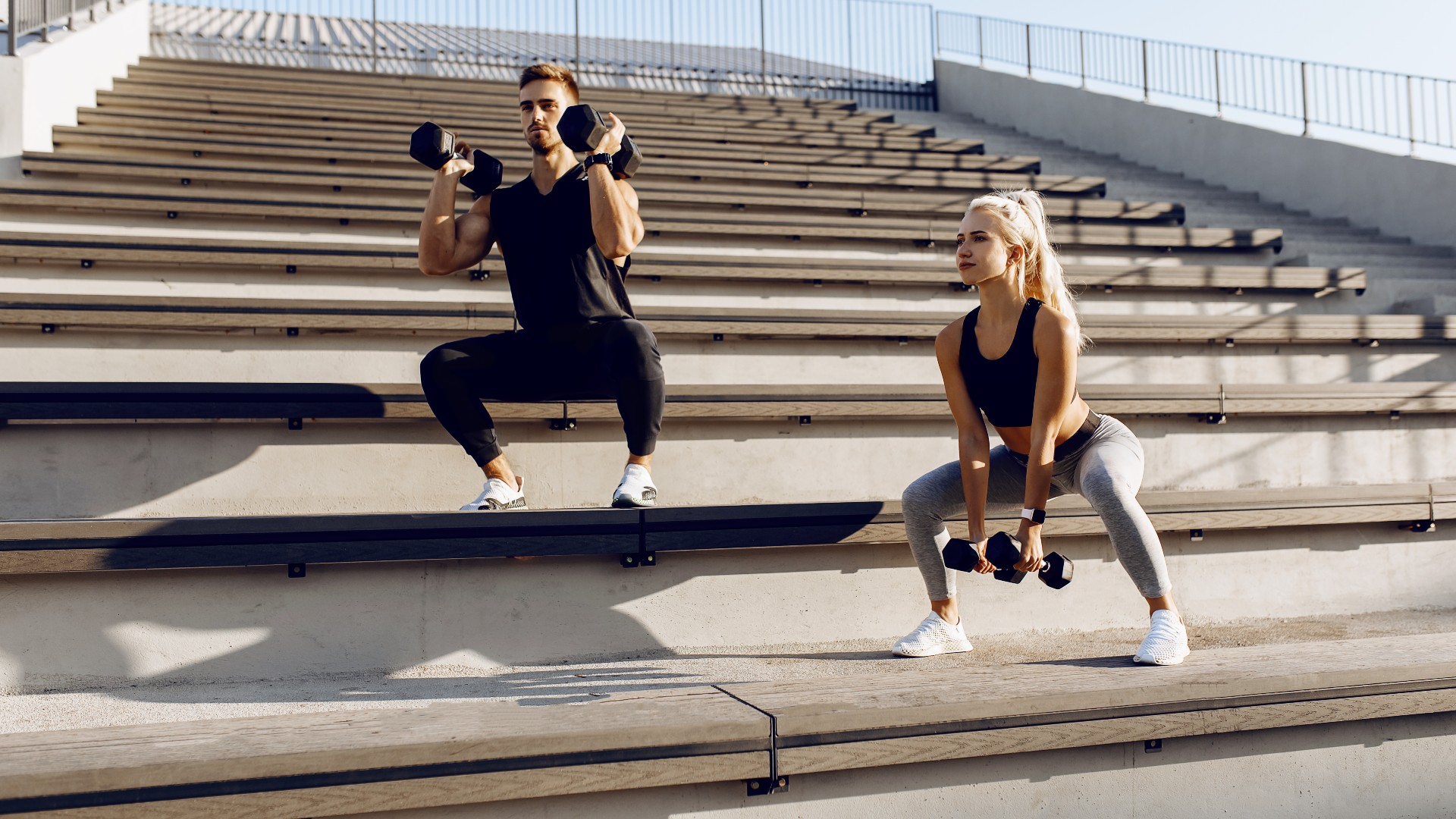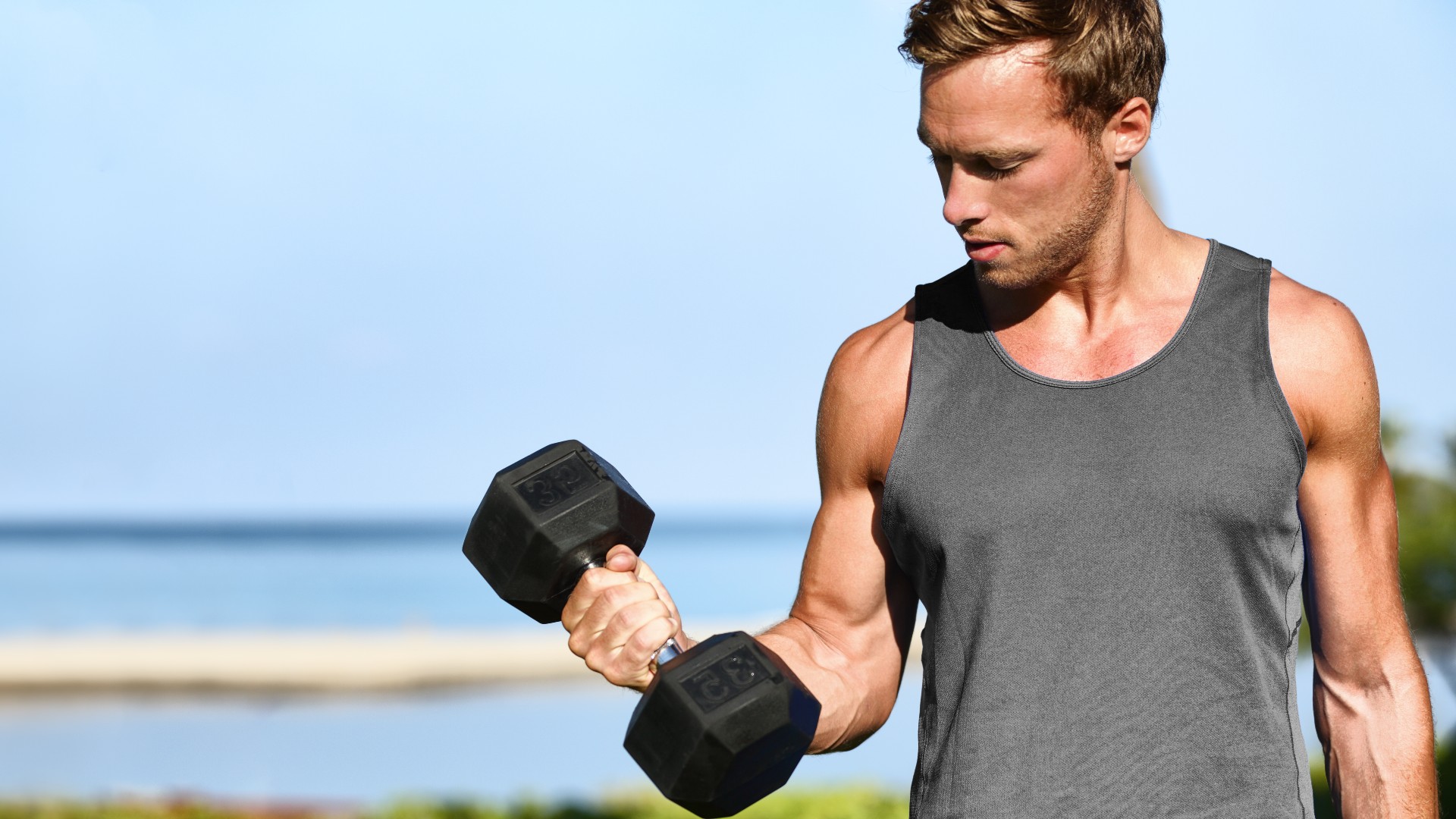
A full-body dumbbell workout that only takes 20 minutes and five rounds to torch muscles and build endurance? Count us in.
We love creating and seeking out quick and effective workouts that we would use ourselves, and this one is sure to burn. Tamara Anthony and Bodybuilding.com bring the fire with a 20-move full-body blaster, working your upper and lower body and core muscles hard for 20 minutes using two dumbbells.
You can lift heavy weights, but you don’t need to. Anthony recommends a lighter dumbbell for upper body exercises and a heavier option for the lower body, but it also depends on your current fitness level. If you don’t have a selection of dumbbells to choose from, our best adjustable dumbbells guide could save you from time-consuming weight changes during exercise.
Remember to keep your form tight and lift with control at all times. If you can, ask a personal trainer to check your form if you're unsure of any moves.

Throughout the short session, you’ll target every major muscle group, including your back, chest, shoulders, arms, core, glutes and leg muscles — so everything then. If you don’t have weights on hand, a resistance band could work for some moves along with two filled water bottles, but a calisthenics workout could be a better fit and only requires your body weight (and a great playlist, of course).
These moves will work your muscles hard, but if the goal is to sculpt lean muscle mass and build strength, you’ll need to exercise consistently several times a week, incorporate a mix of resistance training and exercise you enjoy and adopt the muscle-building technique progressive overload to hit the right intensity. If you don’t have much equipment to hand and want to get creative, here are our 5 clever ways to build muscle without lifting heavier weights.
Watch Tamara Anthony’s 20-minute full-body dumbbell workout
We recommend watching the video below to check your form and learn how to do each exercise with muscles actively engaged. Brace your stomach muscles and keep them engaged as you move, giving the working muscle groups a healthy squeeze. Try not to throw the weights and move with control at all times.
The workout adopts a 45-second on, 15-second off format. Each of the five rounds comprises four new exercises, the last being an ab-blaster.
Here’s what to expect:
ROUND 1
Plank to row
Around the world
Squat to press
Tricep extension
ROUND 2
Alternating shoulder press
Hammer curl to bicep curl
Pulsing squat
Back flyes
ROUND 3
Front to lateral raise
Chest flyes
Side lunges
Hip thrusts
ROUND 4
Bicep curl to press
Reverse lunges
Chest press
Overhead extension
ROUND 5
Russian twists
Sit-ups
Plank pull through
Penguins.
In round one, the first exercise is a plank to row. Starting in a high plank, you’ll step one leg forward into a lunge position and perform a dumbbell row with both arms. Keep your elbows tucked close to your ribs, flatten your back, lift your chest and squeeze your stomach to keep your back safe during the unsupported move. If you don’t feel comfortable, alternate sides.
It can be harder to stay consistent when exercising for time over rep ranges, so aim for anywhere between 8-12 reps per exercise. You should be able to clock up around 10 reps in 45 seconds, but don’t rush to get there — just aim for consistency.
Remember that smaller muscle groups fatigue more quickly, so you could lift lighter weights during isolation exercises like tricep extensions and bicep curls than for compound exercises that work various muscle groups and can handle more load, like the chest press.
You’ll also notice some moves work through a fuller range of motion (the 'around the world,' for example), which might also require a lighter weight as you stimulate more of the muscle for longer. And if you’re wondering when ‘penguins’ became a fitness term and not a waddling aquatic bird — it’s just another (and arguably more accurate) name for heel touches.
Verdict
It’s a well-rounded workout that saves you hours in the gym and still hits the major muscle groups. But, if muscle definition is the goal, remember that you’ll need to look holistically at your approach — hormones, sleep and diet are just a few factors that affect body fat percentage and your ability to lose weight.
That aside, a full-body workout that combines compound and isolation exercises is ideal for fatiguing muscles and hitting more areas in less time. Basically, more bang for your buck. If you can, include a quick warm-up to target the muscles you’ll be working throughout; as a rule of thumb, prioritize activation and mobility, which means moving your limbs around the joints rather than sitting in static stretches.
More from Tom's Guide
At Tom’s Guide, we love stretching — I tried stretching with StretchLab to boost flexibility recently and haven’t quite recovered from it — but it’s better to save it until afterward to tease out tension from those tired muscles.







